Wait? What? Kalamazoo had once been the second highest producer of celery? Chuck and I had lived in Kalamazoo in the early 1990’s while attending Western Michigan University. Neither of us had known the important role that CELERY had played in the economy of K-zoo. Join us as we embark on a journey back in time while strolling through the beautiful park, Celery Flats, located in nearby Portage, Michigan.
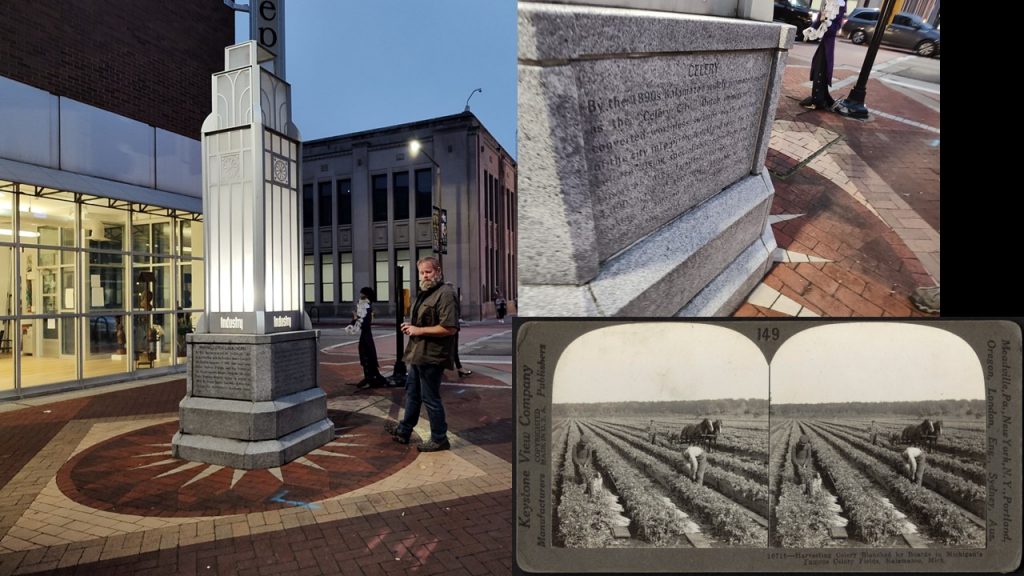
(bottom right) A celery field photo card which had been made for a three dimensional viewer.
We’d strolled passed these Kalamazoo monuments many times, but this time we’d stopped to look!
The Perfect Muck
Long ago as the glaciers had stopped and melted just north of the Kalamazoo area, soggy muck had settled on top of a layer of clay. This soggy soil had created the ideal soggy sod for growing celery.
George Taylor 1856
George Taylor, born in Scotland in 1803, had followed his brother, James, to the Kalamazoo region in 1856. George had brought seeds from Scotland and began growing celery. George willingly donated celery samples to the Burdick Hotel. Served in a vase, celery had been added to the menu and quickly became a popular vegetable.
Cornelius de Bruin 1866
A few years later in 1866 Cornelius de Bruin had arrived from The Netherlands. He often went for walks in his new neighborhood. As he rounded the corner of Cedar Street and Westnedge Avenue he had noticed a strange plant growing. It was celery. Cornelius had requested seeds to transplant into his own garden. His newly relocated peers from The Netherlands joined Cornelius in growing this vegetable in their gardens, too.
Dutch Immigrants
These Dutch immigrants soon cleared Tamarac tree stumps then began cultivating fields of celery, usually working 12-16 hours daily in the celery fields. “Klompen” (wooden shoes) were worn with many layers of socks to provide buoyancy in the thick, wet soil. Horses wore wooden paddles attached to their horseshoes to keep them from sinking into the mud.
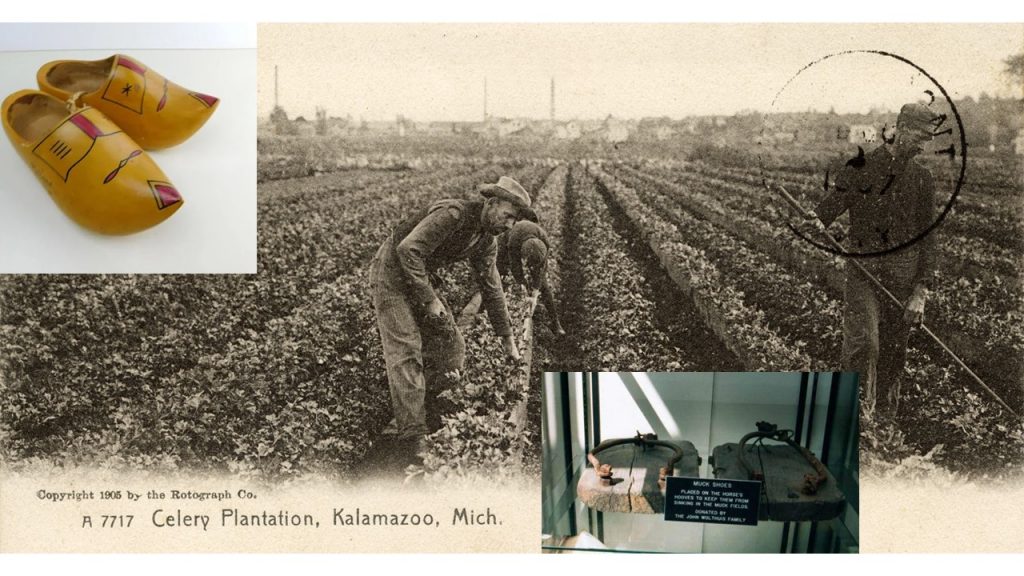
Horses had been fitted for wooden paddle-type footwear to help displace their weight. (bottom photo)
Photo Credit: 1905 Rotograph Celery Plantation Postcard
“It’s no genteel, light work or child’s play to grow celery.” Frank Little had been quoted in 1886.
The seeds are so tiny that one ounce of seed could yield 10,000 stalks. They would be planted indoors in early February, then transplanted several weeks later when the sun had warmed the Earth. The crop can be harvested twice: July and late October.
Kalamazoo Celery
Kalamazoo celery had a sweeter taste and lighter coloring than the green Pascal stalks grown in California. The technique of ‘blanching’ the plants at eight weeks of growth made Kalamazoo celery yellowish-green and sweeter. Growers would block the sun by placing boards on each side of the plants. This lessened the development of chlorophyll, the green pigment.
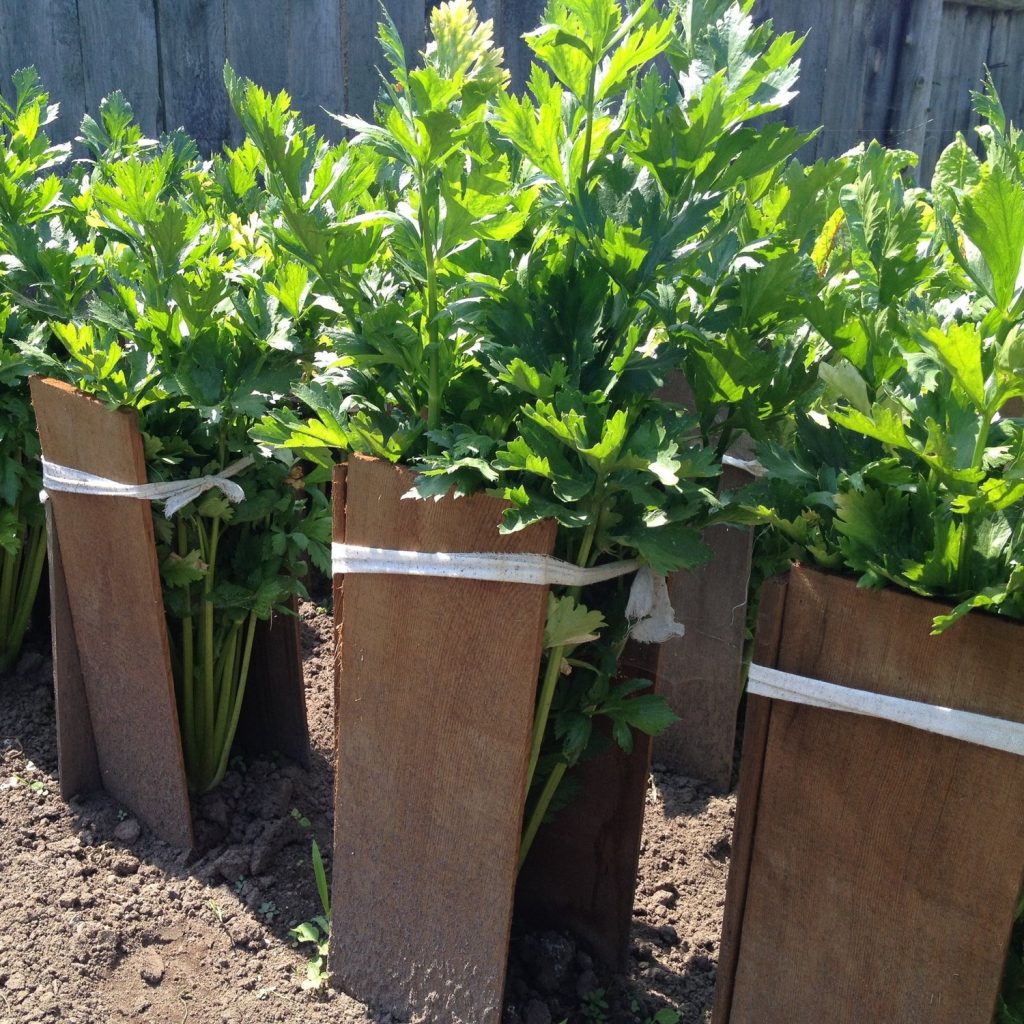
Photo Credit: “Food and Garden Life”
Popular Celery
‘In 1936 one couldn’t enter or leave “celery city” without being approached by a youngster vending Kalamazoo celery.’ Fred Peppel, a former Kalamazoo Public Library staff member, had shared in February 2005. ‘Kids were known for climbing aboard train cars and captivating passersby on every street corner.’
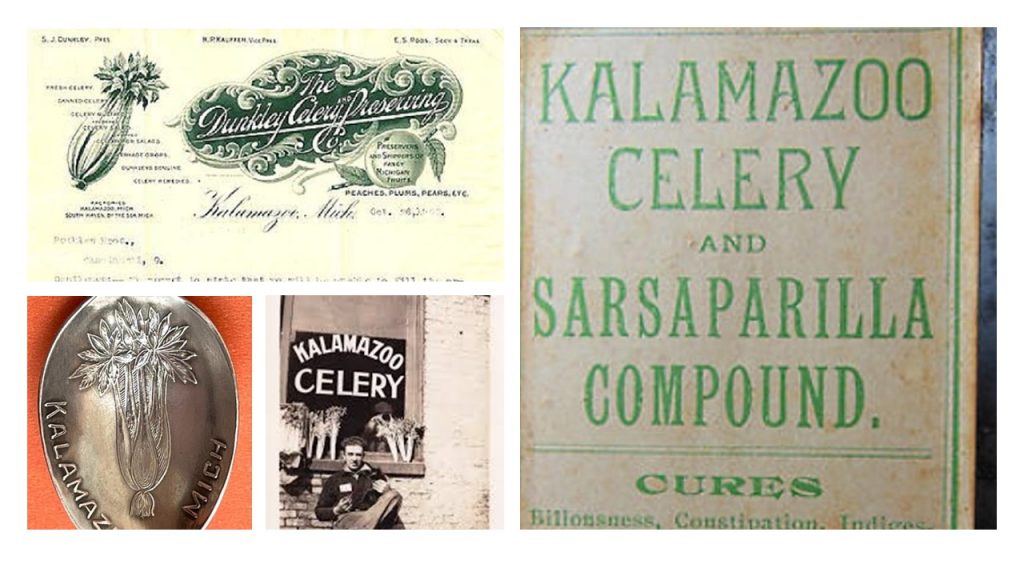
In 1910 six and a half pages in the Kalamazoo City Directory had been devoted to listing celery growers. By 1939 one thousand acres of celery was being cultivated.
The Celery Industry Wilted
The celery industry had wilted for several reasons. Without rotating crops, the celery fields endured a blight in the 1930’s. In addition farmers had been reluctant to begin using modernized techniques causing a smaller yield than the competing states of Florida and California. Another reason had been the paper mills in the region. They had increased their paper production which had required a lot of water. They had drilled deeper wells drying up the once perfect mucky land.
Celery Flats Historical Area Today
Leaves cascaded to the ground as we pulled into the Celery Flats Historical Area. The paved pathways were speckled with an assortment of family groupings, couples walking their dogs as well as joggers. A few groups were snapping autumn photos.
Historical buildings had been relocated in the early 1990’s by the city of Portage. Today, the renovated structures can be rented to hold public gatherings and private parties. We strolled about the park to learn about the structures.
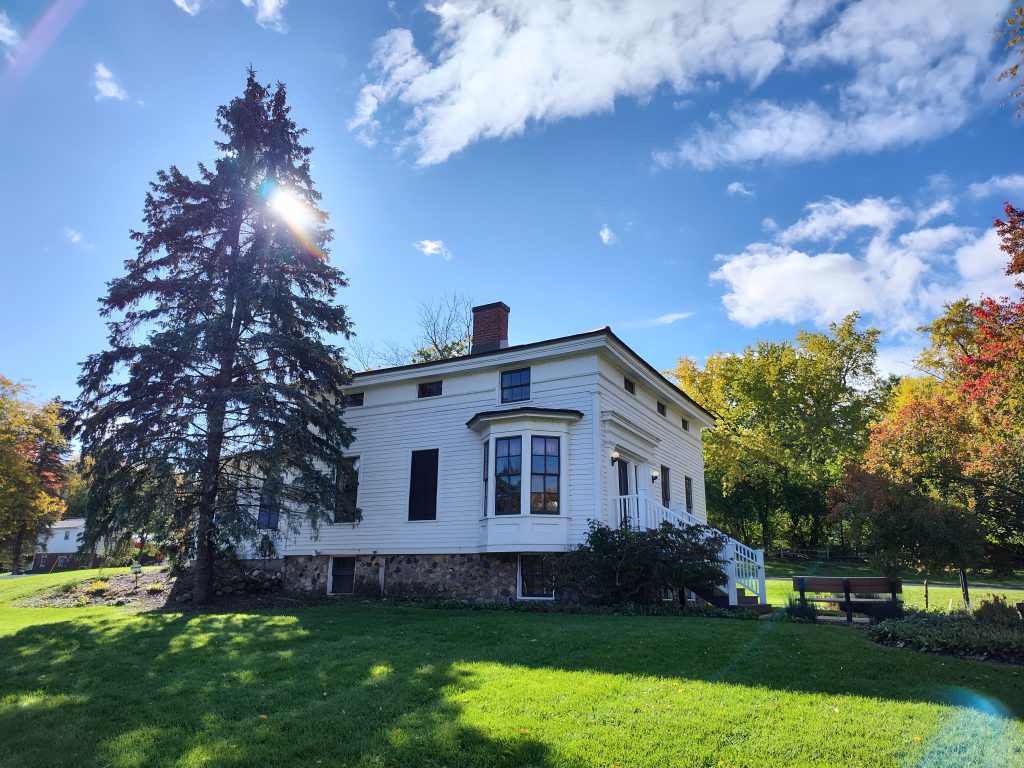
This building had been relocated to The Celery Flats Historical Area and carefully restored in 1994.
This had been the home of US Senator Charles Stuart.
It is said to have been a stop along The Underground Railroad.
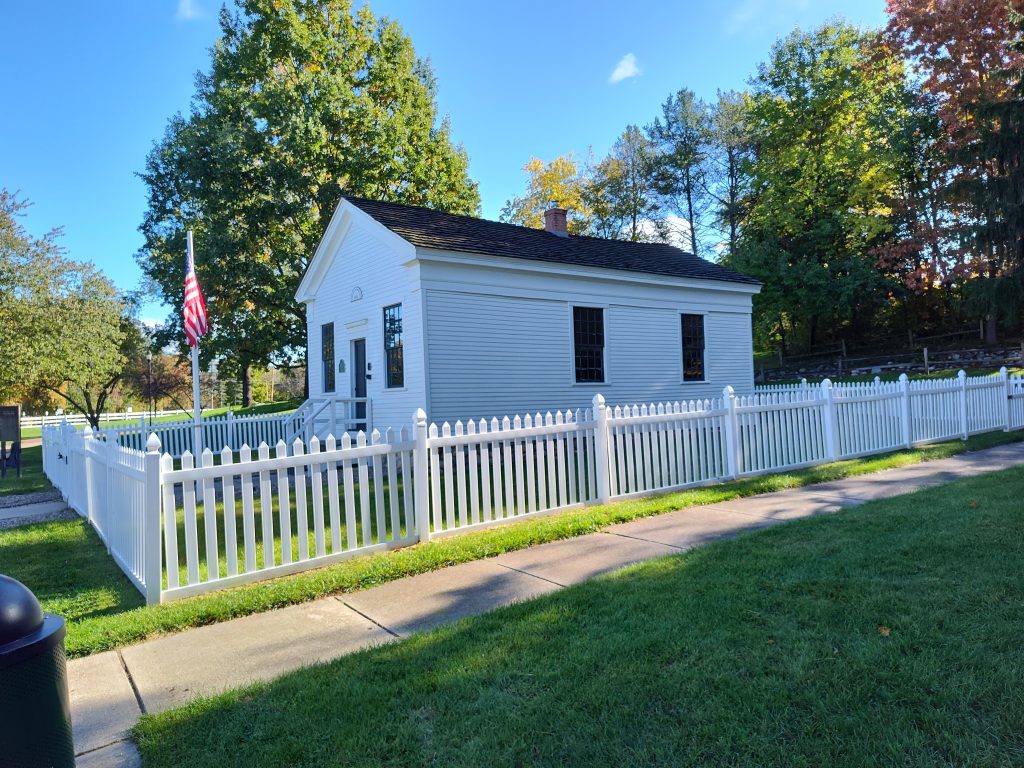
The one room school had been moved to The Celery Flats Historical Area in 1990 and restored.
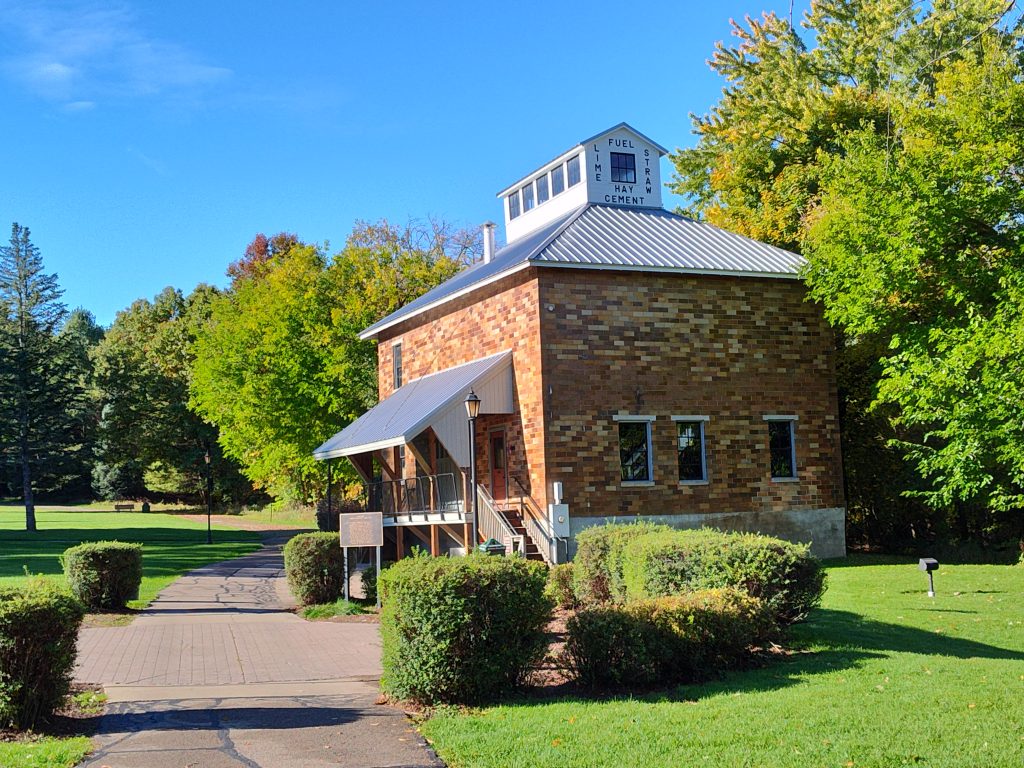
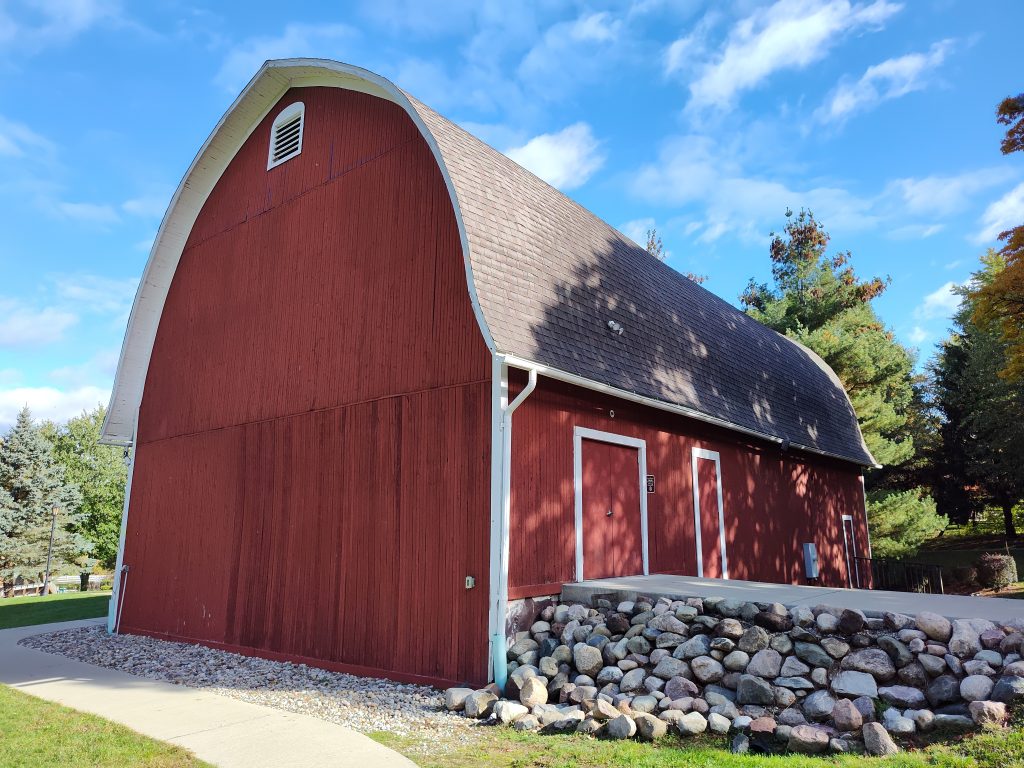
When farming had ended Mary and Vern Meyers had created “The Hayloft Theater” in the 1940’s.
In 1992 The City of Portage had moved the barn to the Celery Flats property next to the 1984 Amphitheater.
We marveled at the effort it has taken to assemble and renovate these structures. The commitment of Portage residents and officials has left us impressed. Celery Flats Historical Area provides accessible, pave trails and Sunday concerts. One can rent a building for a gathering, too! I hope to return with a lawn chair and enjoy one of their music festivals!
Celery
What a curious piece of history! Thank you for joining us on our excursion to Celery Flats Historical Area! From now on I will carry a new appreciation for celery! Stay curious and make memories!
Related Links:
Enjoy our video of our visit on YouTube!
Restless Viking merchandise is available!
Resources:
Celery Flats Historical Area 7328 Garden Lane, Portage, Michigan
“Stalking the Celery City – Kalamazoo” article
Food and Garden Life article
WFMK 99.1 article





